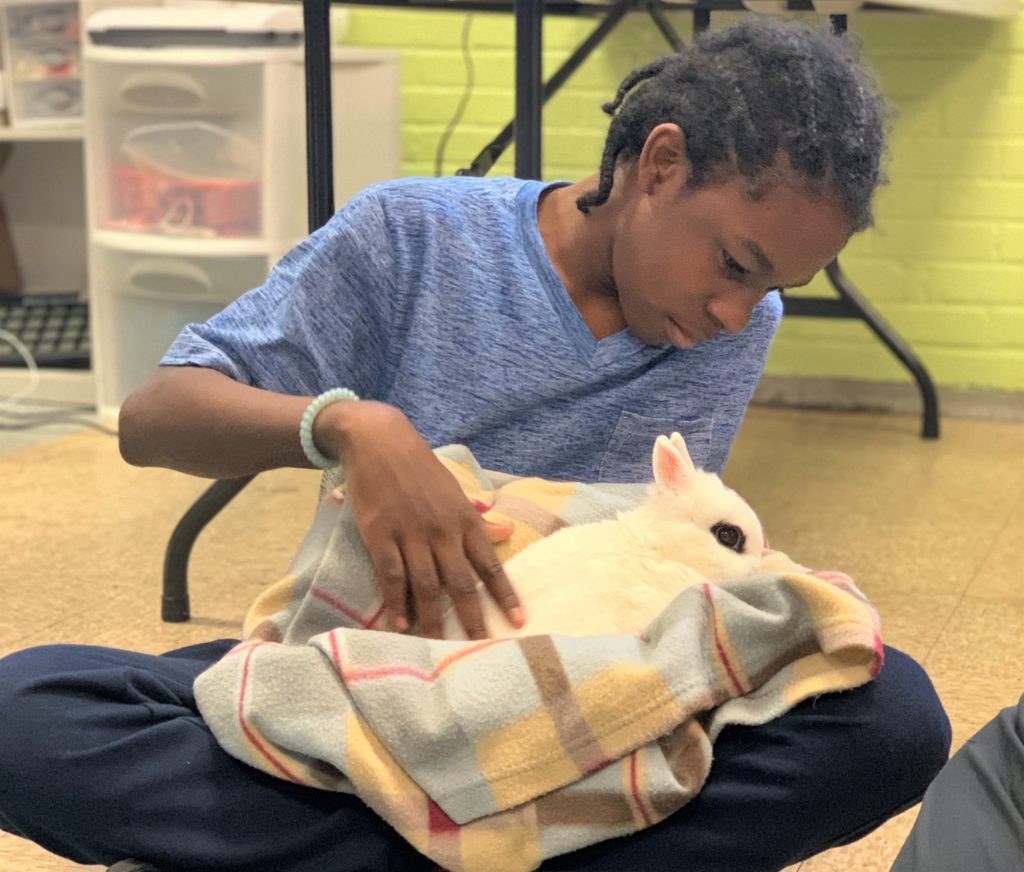
Most people think of handwriting or shoe tying when working with a school-based occupational therapist. It is a common but limited view of the scope of occupational therapy practice. Occupational therapy believes that persons active engagement and participation in occupation and meaningful activities promotes health. Occupational therapy supports people with physical, social, and mental disabilities to lead meaningful lives in natural contexts where those experiences occur such as in a classroom, on the playground, or at a museum. The founders of OT are from diverse schools of thought including psychiatry, nursing, neurology, social work, teaching, and architecture. Their combined analysis and understanding of the human experience formed the basis for the principles of occupational therapy. The Occupational Therapy Framework is an official document of the American Occupational Therapy Association (AOTA). Within the Framework, occupational therapy is defined as the therapeutic use of everyday life activities (and occupations) with individuals or groups for the purpose of enhancing or enabling participation in roles, habits, and routines in home, school, workplace, community, and other settings.
A distinctive feature of OT is the use of activities as a primary intervention strategy. An occupational therapist analyzes and breaks down activities into physical, cognitive, social, emotional and psychological skill components of an activity. The occupational therapist identifies the components hindering independent, efficient, and functional performance in the activities and roles a student has to perform on a daily basis. The intervention goals are aimed at remediating or adapting skills, activities, and environments that promote independent function. The intervention strategies are aimed at creating activity choices for the student to engage in intrinsically motivating and meaningful activities
The school OT evaluation considers areas of occupation such as activities of daily living, education, play and work, rest and sleep, and social participation. The OT analyzes these occupations and activities within the context of habits and routines, and the physical, social, and cultural environment.
The following are some examples of how CORA occupational therapist support students in promoting participation during the school day:
Occupational therapy addresses how a person chooses activities that promote the well-being of the whole person. As stated above, a common concern when a student is referred for OT in the school environment is handwriting. Often a handwriting referral arising from academic concerns can reveal larger and more holistic social-emotional concerns. These holistic concerns should be the focus of targeted therapy sessions.
Stephanie Yhost at Camden is utilizing arts and craft activities and creative expression as a modality when working with preteens in collaboration with the school Social worker. This approach is reminiscent of the origin of OT, its connection to the Arts and Crafts movement and takes a mental health approach in order to improve motivation, attention, focus and self-esteem. For some students, the heart of occupational therapy lies in the opportunity for creative exploration through meaningful activity participation. The creative and expressive activities chosen for OT sessions incorporate sensory, visual motor, and fine motor skills as well as foster social-emotional and self-regulation skill development.
Through collaboration with teachers, social workers, interns and OT graduate students Stephanie is able to embed these creative and therapeutic activities in daily routines, habits and occupations allowing students to use positive self-expression, self-regulation and social emotional skills to facilitate handwriting development in a way that is meaningful and allows them to hold show pride and ownership of their achievements.
The occupational therapists at KAPS, Jessica Kilpatrick and Maren Has-Mahoney, are designing and implementing a self-regulation program with the goal of promoting social-emotional well-being of the students. The self-regulation programis based on established and evidenced based social-emotional and mental health programs designed by occupational therapists including The Zones of Regulation (2018), Every Moment Counts (2014), and the Mental Health Toolkit (American Occupational Therapy Association, 2019). Through activities such as movement, mindfulness and student-driven interests, the aims of the self-regulation program are to increase a student’s emotional literacy, facilitate self-management and coping skills, and to generalize self-regulation capacities in other aspects of the student’s life.

Laura Pietropola along with Temple OT students provide bi-monthly pet therapy services to students in the Multiple Disabilities Support classrooms and Life Skills classrooms at Simon Gratz Mastery Charter High School. Students at Gratz who received OT services may experience difficulty processing sensory information within their environment, which may interfere with a student’s ability to attend and respond appropriately throughout the school day. When a student has difficulty regulating within the environment, certain dysfunctional behaviors may occur. The pet therapy program provides opportunities for the students to engage in positive social interactions, demonstrate appropriate self-regulation abilities, as well as promote social-emotional learning. Research indicates that interacting with animals may enhance overall psychosocial well-being by reducing stress, eliminating isolation, establishing relationships, in addition to reducing problem behaviors (O’Haire, 2013). As a result, the OT department at Simon Gratz received a grant to provide pet therapy services to the students in need. Three to four students are seen at a time with a therapy animal; students are encouraged to practice skills such as asking questions, initiating and engaging in conversation, feeding the animal treats, and utilizing appropriate touch to interact with the animal. All of these skills are tracked through data analysis to provide therapists with concrete evidence of each student’s progression in regards to social and emotional skills. This therapeutic practice in an enjoyable and valuable experience for all.
Amy Sikorsky Rogers works with students at Lenfest Mastery Charter School to develop the skills required to access public transportation and navigate the city independently and safely. Students at Lenfest are expected to access SEPTA to get to and from school each day and to travel between school and their 10th-grade internship placements. For students in need of travel training, occupational therapy sessions begin with preparatory and simulated activities targeting foundational social interaction and community safety skills and progress to learning how to read maps and SEPTA schedules, determine appropriate method of payment and learn rules and norms for boarding, riding and exiting. Students plan and prepare for authentic community outings in which they practice accessing public transportation within the school day with the support of the OT.
